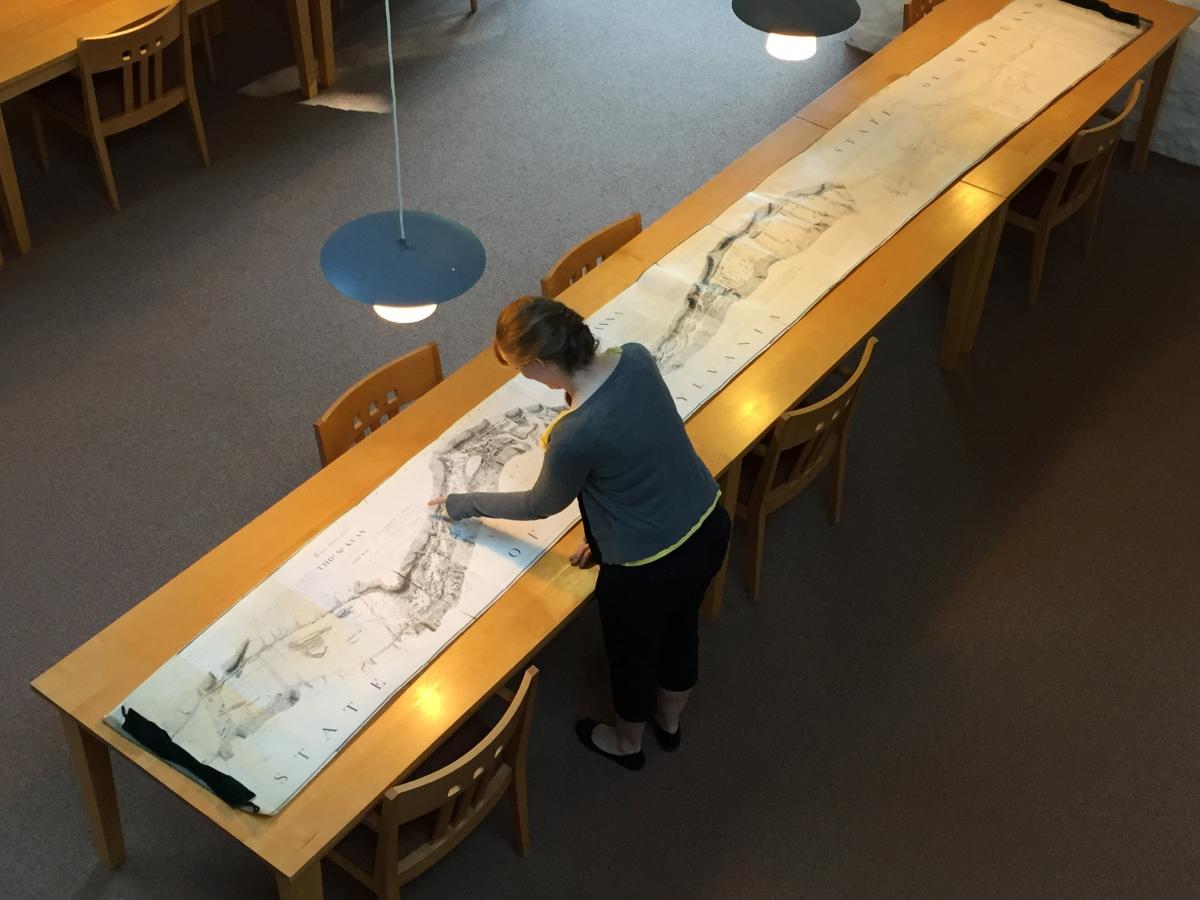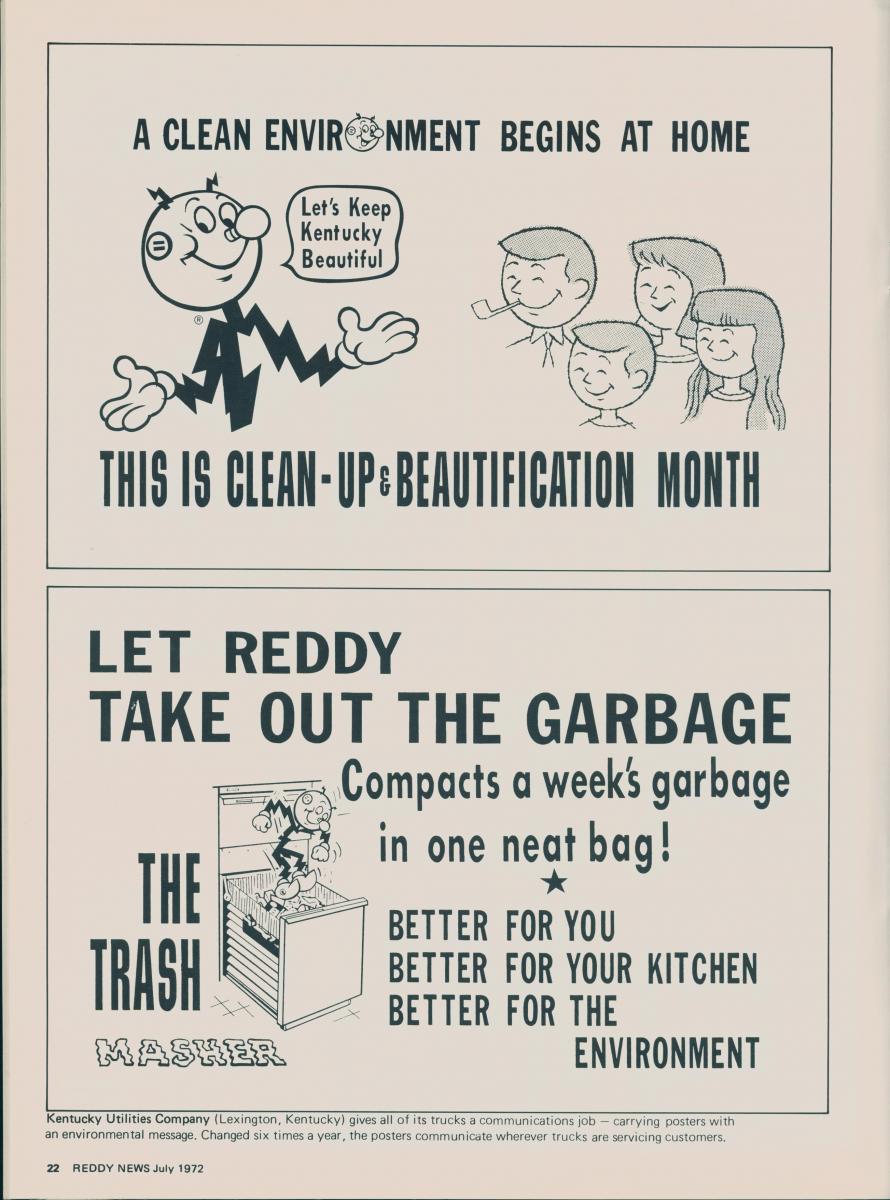In the records of the Pennsylvania Power & Light Company – well-known as the dominant electric supplier for central eastern Pennsylvania since the early twentieth century – is a 17-foot long by 22-inch wide map of the Lower Susquehanna River originally created 216 years ago.
Although the map is a copy, it is not an unusual find in a collection full of material relating to river studies used for hydroelectric development. Perhaps the more interesting question surrounding this enormous map is its intriguing backstory and the reason why PP&L’s records management department maintained a copy for its corporate records.

The map’s origins date back to 1801, when Pennsylvania governor Thomas McKean appointed Benjamin Henry Latrobe as surveyor of the Lower Susquehanna River. Latrobe represented the state of Pennsylvania in a joint venture with the Susquehanna Canal Company of Maryland.
The ultimate goal was to clear rock at Turkey Hill – which towers about 450 feet over the river – as well as other massive boulders to complete a forty-mile survey of the Susquehanna from Columbia to Havre de Grace, thus creating a new route to navigate the rocky river safely and efficiently.
Latrobe himself was a well-known neoclassical architect and one of the first to be formally trained in the United States following his emigration from Britain in 1796. His works included the design of the U.S. Capital, the Baltimore Basilica, and other projects around Washington, D.C., where he served as the second Architect of the Capital.
When given the difficult task of surveying the Susquehanna, Latrobe hired two surveying assistants, woodcutters, chainbearers, and canoers. After completing his survey from October to November of 1801, Latrobe presented his findings to Pennsylvania’s governor and navigation improvements were completed in 1802.
By 1814, the need for additional internal improvement was necessary. That year, Latrobe’s original survey was presented before Congress but ultimately destroyed when the British burned the Capitol. Luckily, Latrobe kept a personal copy of his survey, which is now a part of the Maryland Historical Society’s collections.

Nearly a century after the original survey was lost, newly-formed companies attempted to harness the power of the Lower Susquehanna River. Smaller dam projects began by the late nineteenth century.
One of the more ambitious projects began in 1905, when the McCall Ferry Power Company organized to construct a massive dam at present-day Holtwood. In 1907, the company fell into bankruptcy and was unable to finish the project and a new company, Pennsylvania Water & Power Co., was formed to complete the project.
Sometime after its organization, Pennsylvania Water & Power procured a full size copy of Latrobe’s survey for completing construction on the Holtwood dam in 1910. Latrobe’s survey – still relevant after 100 years - served as a guide to subdue a river once thought untamable by man.
Pennsylvania Power & Light Company absorbed Pennsylvania Water & Power Co. in 1955, and with it came all of the latter’s corporate records, including the full-size copy of Latrobe’s survey.
PP&L and its subsidiaries spent millions in conducting surveys and studies on various Pennsylvania rivers and their tributaries for hydroelectric development and flood control purposes. Like Latrobe’s survey, much of these reports are included in the Pennsylvania Power & Light Company records (Accession 1962), now open for research at Hagley.
Along with documenting the environmental effects that electric utilities have had on Pennsylvania’s river systems, the records offer insight into PP&L’s efforts in various marketing campaigns, franchise building via merger and acquisition, as well as the company’s policies following the Second World War and its attempts to sway public opinion on its newly-conceived nuclear power program.
For more information on the collection, please contact askhagley@hagley.org.
Clayton Ruminski is the Archival Specialist in the Manuscript and Archives Department at Hagley Museum and Library.
